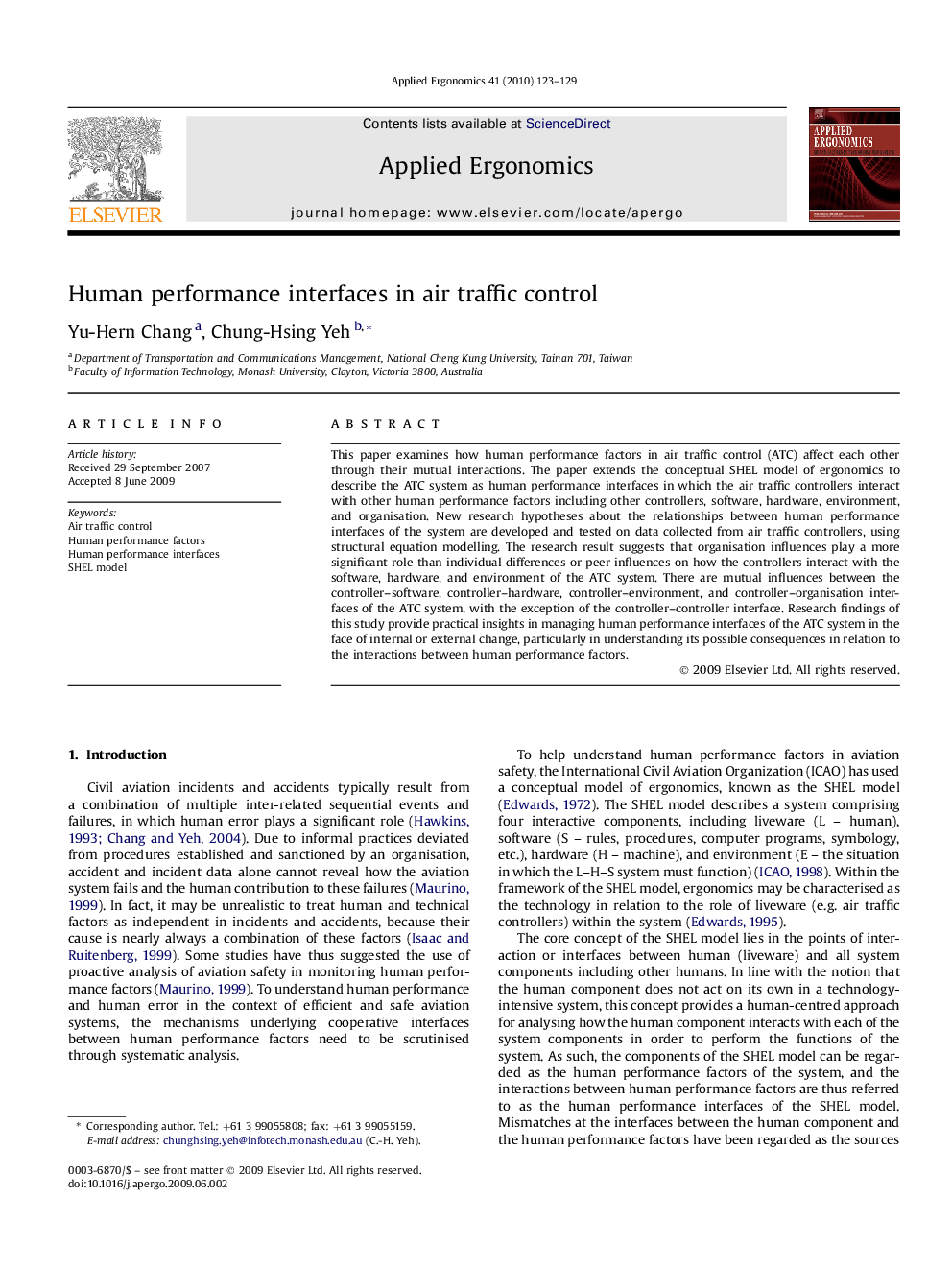| Article ID | Journal | Published Year | Pages | File Type |
|---|---|---|---|---|
| 548640 | Applied Ergonomics | 2010 | 7 Pages |
This paper examines how human performance factors in air traffic control (ATC) affect each other through their mutual interactions. The paper extends the conceptual SHEL model of ergonomics to describe the ATC system as human performance interfaces in which the air traffic controllers interact with other human performance factors including other controllers, software, hardware, environment, and organisation. New research hypotheses about the relationships between human performance interfaces of the system are developed and tested on data collected from air traffic controllers, using structural equation modelling. The research result suggests that organisation influences play a more significant role than individual differences or peer influences on how the controllers interact with the software, hardware, and environment of the ATC system. There are mutual influences between the controller–software, controller–hardware, controller–environment, and controller–organisation interfaces of the ATC system, with the exception of the controller–controller interface. Research findings of this study provide practical insights in managing human performance interfaces of the ATC system in the face of internal or external change, particularly in understanding its possible consequences in relation to the interactions between human performance factors.
